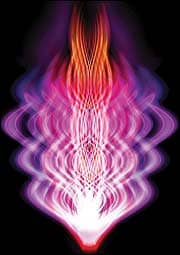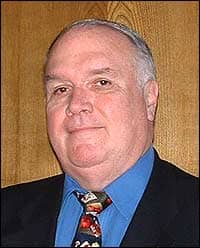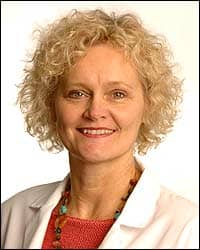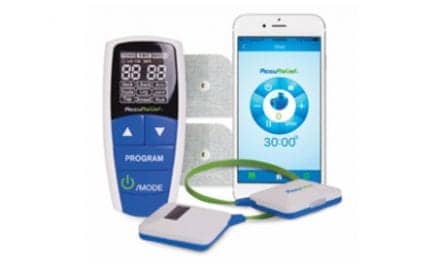 |
Medical professionals have been using low-energy lasers for a number of therapeutic purposes for more than 20 years. Rehab Management recently asked physical medicine professionals Joseph A. Kleinkort, PT, MA, PhD, CEAS, CIE, DAAPM, executive vice president, WorkSTEPS INC, senior rehab consultant, Lockheed Martin, Ft Worth, and president, pain management special interest group, orthopedic section, APTA; and Kathy Tisko, PT, owner of Park Cities Physical Therapy, Dallas, about their use of laser technology for pain management.
REHAB MANAGEMENT (RM): HOW EFFECTIVE IS LASER THERAPY FOR PAIN MANAGEMENT?
Joseph A. Kleinkort: True laser is extremely effective in pain management. I will say that I have found a wavelength of 630 nm to 635 nm most effective along with the ability to pulse the laser. I have found devices with light emitting diodes (LEDs) and superluminous diodes (SLDs) far less effective.
Kathy Tisko: Low-level laser treatments can be extremely effective in reducing musculoskeletal pain, both acute and chronic. As with all modalities, it is never a stand-alone treatment. I use it along with other manual therapies and therapeutic exercise regimens in my practice.
RM: FOR WHAT CONDITIONS IS LASER THERAPY MOST EFFECTIVE IN TREATING?
Kleinkort: Laser is extremely effective in tendonitis, tendonosis, bursitis, lumbar and cervical radiculopathy, TMJ, repetitive strain injuries, headache, strains and sprains, hematoma, scar tissue, lymphedema, wounds, burns, fractures, arthropathies, and neuromuscular dysfunction to name a few.
Tisko: Sprains, strains, tendonitis or bursitis of any joint, TMJ, carpal tunnel or other repetitive strain conditions, cervical and lumbar radiculopathies, painful arthritic joints, and joint or extremity edema to name a few. Wounds definitely heal faster than normal with laser application. We’ve had very good results in reducing headaches. Sweeping the laser light across the area while using neuromuscular techniques or stretching is very effective.
RM: WHAT SPECIFIC EQUIPMENT DO YOU RECOMMEND FOR PAIN MANAGEMENT?
Kleinkort: I recommend and use [a dual-diode, 5 mW, 635 nm laser]. I have found it to be far superior in effect and time of treatment as well as results as any other laser unit. I might add that some companies call LEDs and SLDs lasers, and the physics parameters are quite different and not as effective. In one study, pain from burns was reduced by 60% in the first visit with the use of this device.
Tisko: The most effective unit in my experience, by far, is [one that offers a] frequency that can be pulsed, and there is a dual beam to treat larger areas. Pain also can be managed by using the laser over acupuncture points along with electrical stimulation. In the last year we purchased a different unit with LED pads to treat peripheral neuropathy of the feet and lower legs along with an exercise program. It has reduced painful peripheral neuropathic pain significantly in 75% of the patients seen so far. Many patients were able to reduce the amount of pain medications they were taking.
RM: HOW LONG HAVE YOU BEEN USING LASER THERAPY IN YOUR PRACTICE?
Kleinkort: I have used lasers since around 1980, and although our original units had an output of 1 mw and a longer treatment time, we saw amazing results. Since then, I clinically have found significant improvement in outcomes. I wrote the first articles in this country describing laser as well as the first chapter on its use.
Tisko: I have four different units in my clinic that I have used daily since 2002.
RM: WHAT ARE THE LATEST TECHNOLOGICAL ADVANCES IN THIS FIELD?
Kleinkort: The use of 635 nm, according to a few authors, seems to be the most effective in biomodulation. I also would add that a parallel beam is helpful to treat larger areas, and the ability to modulate frequency is as important as we found in electrical stimulation many years ago.
Tisko: Many manufacturers are developing light units that are not true lasers, but produce a light with LEDs or SLDs. The physics of the operation of these units is different from a true laser device, so it is more difficult to compare units to each other in both efficacy and pricing. I anticipate that as low-level laser therapy is more thoroughly researched, it will prove to be a highly effective modality with many applications.
 |
 |
| Joseph A. Kleinkort, PT, MA, PhD, CEAS, CIE, DAAPM | Kathy Tisko, PT, owner of Park Cities Physical Therapy, Dallas |
RM: HOW SAFE IS LASER THERAPY?
Kleinkort: Probably one of the safest modalities on the market. The main caution is not to stare directly into the laser. If treating open wounds or in the mouth, it is good to wear protective glasses. It can be used with metal and plastic inserts since there is no heating effect.
Tisko: [It is] very safe in my experience. I have not experienced any adverse reactions in the daily use of laser treatments. You should not expose the eyes to the direct light. Special glasses can be used to protect the eyes.
RM: HOW DOES LASER THERAPY WORK?
Kleinkort: A number of studies show that laser increases ATP synthesis, enhances collagen synthesis and tensile strength of collagen, increases microcirculation, accelerates the inflammatory phase of wound healing, and augments fibroplasia. There are a number of other postulated theoretical mechanisms taking place. Clinically, we see a dramatic reduction in pain and an immediate increase in range-of-motion (ROM).
Tisko: Research seems to indicate a biomodulation theory—augmenting collagen synthesis, and connective tissue repair, increasing ATP production on a cellular level—overall enhancing cellular healing and repair.
RM: ARE THERE RISKS INVOLVED? IF SO, WHAT ARE THEY?
Kleinkort: I would say that there are minimal risks other than eye exposure. I have found the laser to work with a high degree of efficacy in 80% to 90% of the patients when applied. If it doesn’t work in modulating pain and increasing ROM in two to three treatments, I go to another treatment. I would caution to say that we must use all the other manual and therapeutic exercise along with this and that this is not a panacea.
Tisko: Direct eye exposure seems to be the best-known potential risk.
RM: HOW AFFORDABLE IS LASER THERAPY?
Kleinkort: Laser is affordable, and the results of laser are so dramatic in most cases that they significantly enhance the marketability of a practice. There are some entry level lasers that start around $4,000 to $5,000.
Tisko: [Laser is] a tool I would not be without, and clinical experience has now proven its efficacy to me. I don’t evaluate and purchase equipment based on how many insurance reimbursable units I can perform to pay the unit off. Laser can be an expensive purchase for a practice, but as the technology advances, price often comes down. You can often purchase preowned equipment at substantially lower prices as well.
RM: WHAT ARE THE REIMBURSEMENT ISSUES CONNECTED WITH LASER THERAPY?
Kleinkort: Medicare and some insurance companies do not approve laser therapy and other insurance companies do. Sadly, all laser treatments aren’t the same and have a wide range of results. The unit we used in an FDA approval study on 87 patients double-blinded had a significant result in 89% of patients in 3 minutes vs 14% placebo. Another unit with a different wavelength took 15 treatments in 5 weeks to get 55% vs 40% placebo.
Tisko: Insurance reimbursement is variable, as it is with many physical modalities.
Rogena Schuyler Silverman is editor of Rehab Management.
A Quick Reference Source for Laser Classifications and Definitions |
|
Photobiomodulation: The sum of processes and mechanisms by which nonionizing radiation affects biological organisms. Phototherapy: The use of nonionizing radiation to induce therapeutic outcomes through photobiomodulation. LLLT (Low Level Laser Therapy): A form of phototherapy that involves the application of athermal, monochromatic, coherent, and polarized, nonionizing radiation to induce therapeutic outcomes. LASER (Light Amplification by Stimulated Emission of Radiation): A device that uses the principle of amplification of electromagnetic waves by stimulated emission of radiation and operates in the infrared, visible, or ultraviolet region. LD (Laser Diode): A semiconducting device that emits monochromatic non-ionizing radiation by a process of stimulated emission. A laser beam has a number of unique properties, such as coherence, polarization, and directionality. Beams emitted by laser diodes are not, as is often stated, “straight” and/or “parallel.” Unless manipulated with additional optical devices such as lenses, a laser diode’s beam is broadly divergent along one plane and narrowly divergent along the perpendicular plane, producing an elliptical cross-section. IRED (Infra Red Emitting Diode): A semiconducting device that emits non-coherent, narrowband, nonionizing radiation at wavelengths from 700 nm to 1 mm by a process of spontaneous emission. Often incorrectly called infrared LEDs or SLDs, IREDs are mostly used in multiple-emitter clusters, and are sometimes combined with LEDs to produce a multiwavelength (polychromatic) device. LED (Light Emitting Diode): A semiconducting device that emits noncoherent, narrowband, nonionizing radiation at wavelengths from 400 nm to 700 nm by a process of spontaneous emission. LEDs are, along with IREDs, used in multiple-emitter clusters. SLD/SLED (Super-Luminous/Superluminescent Light Emitting Diode): Super-luminous—or superluminescent—light emitting diodes are intermediate between LEDs and laser diodes. Compared to LEDs, SLDs offer higher power output in a narrow spectral range. Radiation emitted by SLDs has a much shorter coherence length than that produced by lasers, thus they can produce speckle-free beams—a feature that is of use in sensor technologies and some imaging applications, such as optical coherence tomography. SLDs are not used in light therapy devices due to their high cost, low power (compared to laser diodes), and large package sizes, which, combined, make them a low-value, no-benefit proposition compared to standard laser diodes or LEDs/IREDs. Power: The rate at which energy is emitted, transferred, or received. The standard international unit of power is the watt. Radiant power, or radiant flux, is power emitted, transferred, or received in the form of radiation. Power Density (Irradiance): A measure of the amount of radiation being delivered to a particular area on a surface, stated in watts per square centimeter (W/cm2). Energy (Radiant Energy): The capacity for doing work. Calculated by multiplying power (watts) by time (seconds), and stated in joules (J). Energy Density (Radiant Exposure, or Fluence): A measure of the amount of energy being delivered to a particular area on a surface, stated in joules per square centimeter (J/cm2). Wavelength: The distance, in meters, between two successive points on a periodic wave that are in the same phase. Due to the very short wavelengths of light and infrared radiation, it is often expressed in nanometers. Nanometer: One billionth of a meter (1 x 10-9 m). Infrared Radiation: Nonionizing electromagnetic radiation within the wavelength band from 700 nanometers to 1 millimeter. Visible Radiation: Nonionizing electromagnetic radiation within the wavelength band from 400 to 700 nanometers, which is able to be “seen” by the human eye. Aperture: Any opening through which laser radiation can pass, thereby allowing human access to such radiation. Pulsed Emission: Energy emitted in a single pulse, or train of pulses, in which the duration of each pulse is less than 25 milliseconds. Some laser diodes, typically—but not limited to—904 nm devices, will emit only trains of pulses that are characterized by very short pulse durations but relatively high peak power. The average power of a pulsed emission is calculated by multiplying the peak power, pulse duration, and frequency of pulsation. Continuous Wave (CW) Emission: Energy emitted in a continuous manner for a period exceeding 25 milliseconds. In continuous wave emission, the average power is equal to the peak power. Modulated Emission: Both pulsed and continuous wave emissions can be modulated by superimposing a frequency over the intrinsic emission mode of the device. The power of a modulated emission is equal to the average power multiplied by the duty cycle of the modulation. Duty Cycle: The ratio of “ON” time to “OFF” time for a modulated emission. Class 3B Laser: May have an output power of up to 0.5 watts (500 mW) and capable of causing an injury to the eye from direct viewing or reflection of the beam. Class 3B lasers are widely used as therapeutic devices and are generally safe for exposure to the skin; however, some discomfort may be felt by individuals with darker skin or if areas of dark pigmentation (such as birthmarks and tattoos) are irradiated. Class 4 Laser: The output power exceeds 500 mW and is capable of causing injury to the eye and skin. Class 4 lasers generate heat, and so it is possible they affect a differing set of biological mechanisms than Class 3B devices when used as a therapeutic tool. |





